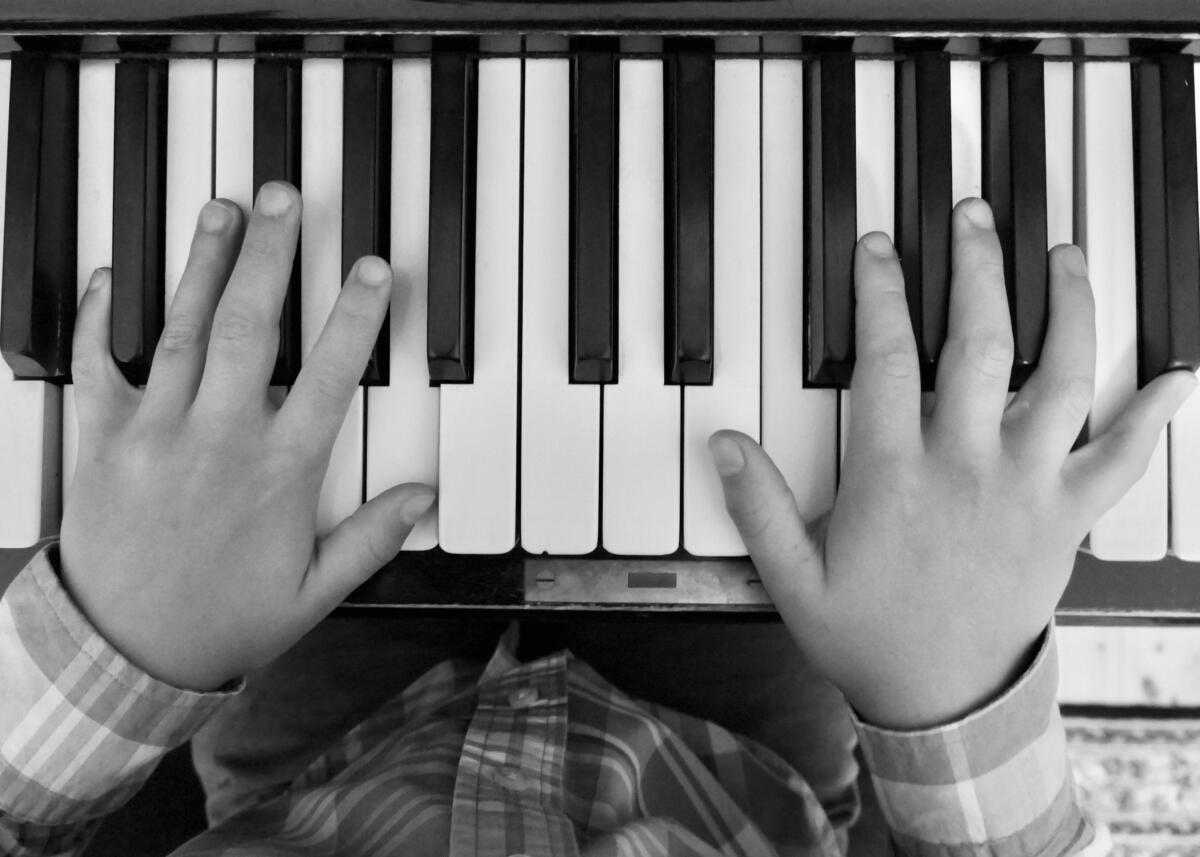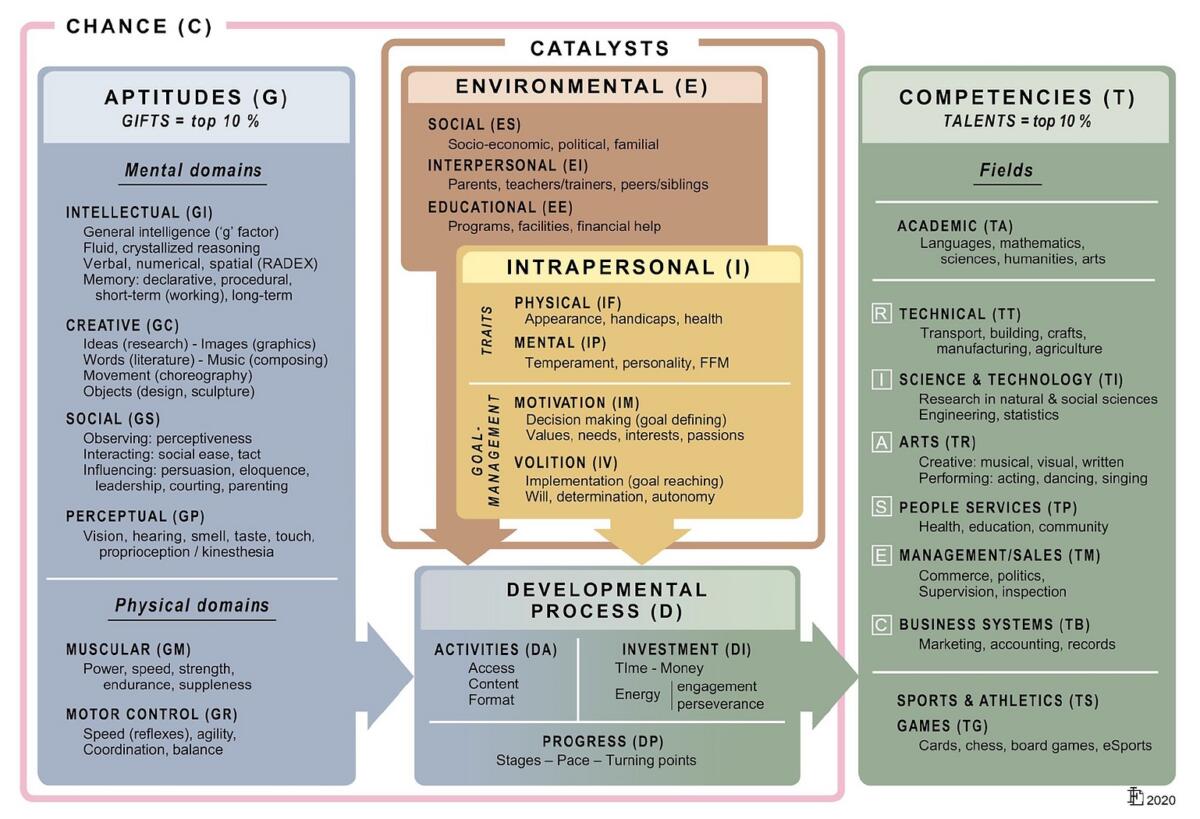Differentiating giftedness from talent in music education
What are the aspects that impact on talent development? Is it just a matter of having a strongly supportive environment (nurture)? Is it a question of innate abilities or inborn gifts (nature)? Is it having good chances in life (luck)? Or is t a combination of all this or part of it? This blog post introduces the seminal contribution of Françoys Gagné to the field of giftedness and talent through its Differentiated Model of Giftedness and Talent (DMGT).

The Differentiated Model of Giftedness and Talent (DMGT) by Françoys Gagné
This blog is intended to share with you the Differentiated Model of Giftedness and Talent (DMGT) by Françoys Gagné (2021) – a French-Canadian leading figure in educational psychology whose seminal work on the giftedness paradigm has been crucial in developing the field and supporting gifted youth’s holistic development. For instance, Gagné’s model has helped differentiating those often interchangeably used concepts of gifts and talents, but also understanding that there are degrees of giftedness in gifted individuals, ranging from mildly gifted through to profoundly gifted[3]. Gagné’s research, and research by other scholars who have been inspired by his work have shown how gifted children display asynchronous development in various areas and domains (i.e., giftedness is not necessarily an omnipresent thing in all areas of children’s life, and thus, children should be supported holistically, and not only musically, mathematically, or in sports, for example). Gagné is not the only scholar who has come to these important conclusions and definitions, but his model is an excellent, compact, accessible, and clear exercise to unfold the phenomenon.

This model explains that 10% of the population – regardless of gender identity and biological sex, ethnic, language, environment, or socioeconomic conditions – come to this world with exceptional gifts (i.e., potential, natural abilities). The model understands that gifted children and youngsters learn rather quickly and well above their peers, that this can be observed at any educational level, and that these gifted learners are at the top 10% of age peers.
Some of these natural abilities, as you can see on the graphic’s left column include displaying unusual memory or coordination, being a natural leader, having specific physical characteristics, or being particularly locuatious and at ease as a multilingual player in a variety of contexts. Gagné’s model and the research that backs it up show us that children can display their natural abilities from a very early age in one or more of the domains listed in the model.
On the middle column, one finds the various environmental factors such as the school, or home and wider societal ecosystems, which play (or at lest shoud play) a major role in supporting gifted (and any) children to reach their dreams and full potential. That middle column also includes the intrapersonal characteristics of gifted individuals, such as their motivation, or aspects of their developmental processes that affect on turning their natural abilities into talents.
Last but not least, on the right column, are the different talents that result after outstanding mastery and systematic development of competencies or abilities in any human activity. Those who reach this group are not all necessarily highly gifted from birth, but they are also at the top 10% of their group. In music, these talents could include, for example, proficiency in following areas: performance, improvisation, composition, conducting, arrangements, analysis, teaching (see McPherson, 2016). Unfortunately, research has shown that the correlation between being highly gifted at birth and reaching performance eminency in any area, is not as strong as we could assume – the middle column has a lot to do with this: widely spread societal misconceptions and stereotypical views about giftedness are partly to be blamed for this.
[Here an important disclaimer: even if a child comes to the world with certain gifts for a certain domain where the child could become the ‘world’s best’, that should not translate into persuading or pressing her/him to pursue such professional career, unless the child so decides. A gifted child should be able and free to choose something that might be more challeging for her/him if that makes the child happier. But if a gifted child decides to follow a talent development path that aligns with her/his potential, the child should be holistically and wholeheartedtly supported in. that area and as a comoplete human being.]
I will navigate you in future posts through the implications of the DMGT model for music education, and how I connect it to care ethics in music education research. In the meanwhile, you can watch a video by François Gagné himself where he describes his model:
About this blog post
This blog post has been written to mark UNICEF’s World Children’s Day, which is celebrated annually on November 20. #WorldChildrensDay is a global day of action to mark the adoption of the United Nations Convention on the Rights of the Child (1989). The post addresses the various specialist systems for talent development in music available worldwide to underage gifted/talented children and adolescents. This post is part of the blog post series related to the author’s 5-year research project:“The Politics of Care in the Professional Education of Children Gifted for Music” (2022-2027), funded by the Research Council of Finland.
Read more about the United Nations Convention on the Rights of the Child
Read more about the “Caring for Musically Gifted Children” project
Cite as: “López-Íñiguez, G. (2024, November 20. Differentiating giftedness from talent in music education. Uniarts Helsinki’s Emerging Perspectives on Instrumental Pedagogy blog.”
Writer
Dr. Guadalupe López-Íñiguez, University Researcher, Academy Research Fellow, and Docent at Uniarts Helsinki
References
Gagné, F. (2021). Differentiating giftedness from talent. The DMGT perspective on talent. Routledge.
Emerging Perspectives on Instrumental Pedagogy
This blog offers new approaches and viewpoints to instrumental pedagogy at all educational levels, from music schools to higher education. The particular focus of this blog is on student-centered pedagogies that prioritize the physical and psychological health of music students, support their socio-emotional development, and challenge overused power hierarchies in the music studio. The blog is written by Dr. Guadalupe López-Íñiguez, University Researcher, Academy Research Fellow, and Docent at Uniarts Helsinki.
Latest posts
-
Caring Institutions, Thriving Children: Rethinking Gifted Music Education
-
Recognizing and supporting musically gifted children: Social distinction or social justice?
-
Giftedness and talent in music: Nature, nurture, and/or luck?
-
Music education pathways for underage gifted learners’ talent development
Follow blog